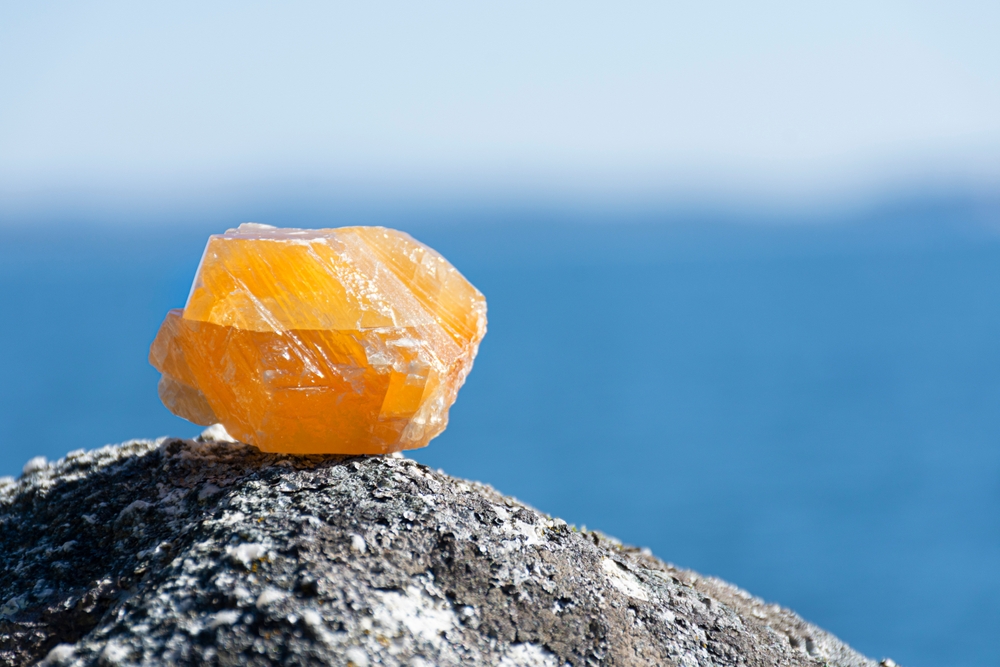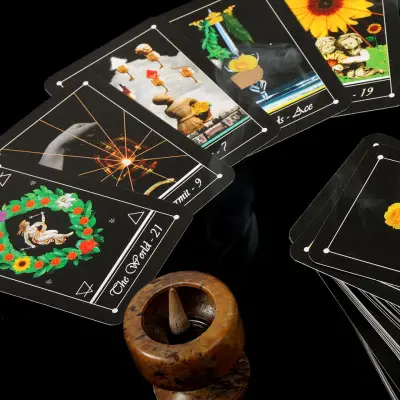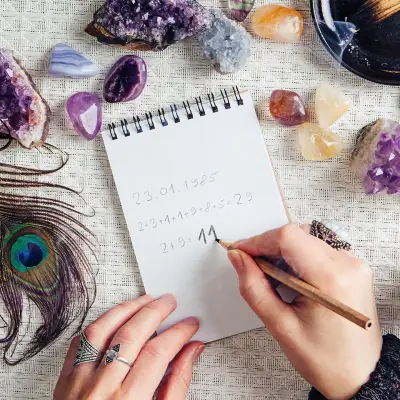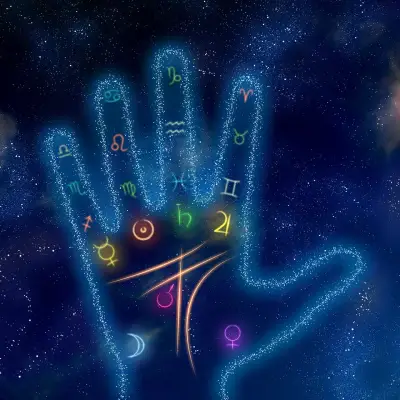If you’re curious about calcite, you’re not alone. Whether you're drawn to its mesmerising crystal formations, wondering about its everyday uses, or intrigued by its healing properties, this fascinating mineral has a lot to offer.
Calcite is one of the most abundant minerals on Earth and plays an essential role in both nature and industry. From ancient fossils to modern construction, and even spiritual healing, calcite is everywhere—even if you don’t always notice it.
So, let’s explore everything there is to know about calcite rock, from its formation to its uses and spiritual significance.
Jump to:
- What is Calcite?
- What Type of Rock is Calcite?
- What Does Calcite Look Like?
- Where is Calcite Found?
- Calcite’s Properties
- Calcite Crystal Benefits
- What Does Calcite Do Spiritually?
- How to Use Calcite Crystals
- How to Cleanse and Care for Calcite
- What Chakra Does Calcite Activate?
- How to Identify Real Calcite
- The Best Crystal Combinations for Calcite
- Frequently Asked Questions About Calcite
- Study Crystals for £29
What is Calcite?
The definition of calcite is a carbonate mineral, made primarily of calcium carbonate (CaCO₃). It is part of the carbonate mineral group and is known for its striking crystal formations, which can be found in a wide range of colours.
Many people wonder, "Is calcite a mineral or a rock?" The answer is simple: calcite is a mineral. However, it often forms in sedimentary rocks, meaning you might hear it referred to in that context.
What Type of Rock is Calcite?
Since calcite forms mainly in sedimentary environments, it’s commonly found in limestone and marble, both of which are widely used in construction and sculpture. So, while calcite itself isn’t a sedimentary rock, it’s a key component of many. If you’re wonderig if calcite is an igneous rock, the answer is no—igneous rocks come from magma, and calcite forms through different processes.
What Does Calcite Look Like?

Calcite appears in a variety of colours, including white, yellow, green, blue, orange, pink, and black. It can be transparent, translucent, or opaque, with a surface that ranges from smooth and polished to rough and rugged in its raw form.
Its crystal shape is often scalenohedral, meaning pointed and multi-faceted, though it can also take on rhombohedral or massive (chunky and unstructured) formations. With a hardness of 3 on the Mohs scale, calcite is relatively soft compared to minerals like quartz.
One of its most fascinating properties is double refraction—when you look through a clear piece, objects may appear doubled!
Where is Calcite Found?
Calcite is one of the most abundant minerals on Earth and is found in a wide range of environments. Some of the most significant sources include:
- The United States – Especially in limestone caves and sedimentary rock formations.
- Mexico – Home to extensive calcite deposits in caves and mines.
- Brazil – Produces high-quality calcite crystals.
- China – A major source of both raw and polished calcite.
- Iceland – Famous for Iceland Spar, a transparent variety of calcite known for its optical properties.
Calcite is also a key component in coral reefs, stalactites, and stalagmites, forming naturally over thousands of years in cave systems.
Calcite’s Properties
Calcite is a highly versatile mineral with a range of physical and energetic properties. Here’s what makes it unique:
Physical Properties
- Chemical Formula: CaCO₃ (Calcium Carbonate)
- Hardness: 3 on the Mohs scale – relatively soft and can be scratched with a knife.
- Crystal Structure: Typically scalenohedral, rhombohedral, or massive formations.
- Cleavage: Perfect in three directions, meaning it breaks into well-defined shapes.
- Reaction to Acid: Fizzes when exposed to weak acids like vinegar or hydrochloric acid, due to its carbonate content.
- Fluorescence: Some calcite specimens glow under UV light, displaying vibrant colours.
Metaphysical Properties
- Amplifies Energy: Calcite is believed to enhance spiritual and physical energy, making it an excellent stone for motivation and mental clarity.
- Cleanses Negative Energy: Thought to absorb negativity and refresh stagnant environments.
- Boosts Learning and Memory: Often used to improve focus, concentration, and retention of information.
- Encourages Emotional Balance: Different colours of calcite are associated with various chakras, helping to restore harmony in emotions and thoughts.
Emotional and Spiritual Healing
Calcite is considered a powerful cleansing and revitalising crystal. It is often used to clear emotional blockages, encourage self-confidence, and enhance spiritual awareness.
People turn to calcite to release emotional stress, combat mental fog, and promote inner peace. Whether used in meditation, placed in a living space, or worn as jewellery, calcite is a supportive stone that encourages positivity and transformation.
Calcite Crystal Benefits

There are many reasons why people choose to work with calcite crystals, whether for energy cleansing, emotional healing, or mental clarity. Beyond its beautiful appearance, calcite is believed to offer a variety of supportive and transformative properties depending on its colour.
What is Calcite Crystal Good For?
Each colour of calcite is thought to provide specific benefits, making it a versatile crystal for different needs:
- Orange Calcite – Boosting Creativity and Confidence: Orange calcite is associated with motivation, inspiration, and self-confidence. It’s often used to spark creativity, encourage new ideas, and break through mental blocks. Many people turn to this crystal when they need a burst of optimism and enthusiasm to take action on their goals.
- Blue Calcite – Enhancing Communication and Soothing the Mind: With its calming and tranquil energy, blue calcite is believed to help with communication and self-expression. It is often used by those who want to speak with clarity and confidence, whether in personal conversations, public speaking, or creative writing. Additionally, its soothing nature is thought to relieve stress and promote relaxation.
- Green Calcite – Encouraging Emotional Balance: Green calcite is closely linked to emotional healing and heart chakra energy. It’s believed to release past wounds, fears, and negative emotional patterns, replacing them with compassion, self-acceptance, and inner peace. Many people turn to green calcite during times of emotional transformation and self-discovery.
- Yellow Calcite – Improving Motivation and Personal Power: Yellow calcite is often called a stone of confidence and empowerment. It boosts motivation, enhances focus, and increases personal willpower. Many use this crystal to strengthen their inner resolve, especially when tackling new challenges or working towards ambitious goals.
- Clear Calcite – Cleansing Energy and Aiding Spiritual Growth: Clear calcite is considered a powerful energy amplifier and cleanser. It is thought to remove stagnant energy, clear mental fog, and enhance spiritual awareness. This crystal is often used in meditation and spiritual practices to encourage a deeper connection to higher consciousness and intuition.
What Does Calcite Do Spiritually?
Spiritually, calcite is considered a stone of transformation and amplification. It’s believed to enhance spiritual awareness, cleanse negative energy, and strengthen intuition. Many people use calcite to deepen their connection to higher consciousness, encouraging clarity, enlightenment, and a sense of inner peace.
Different colours of calcite are linked to specific chakra energies, making it a powerful stone for spiritual healing and alignment.
How to Use Calcite Crystals
Calcite can be used in various ways to harness its cleansing and uplifting energy:
- Wear it as jewellery – Calcite is a popular choice for pendants, rings, and bracelets, allowing you to carry its energy throughout the day. Wearing blue calcite near the throat chakra can enhance communication, while yellow calcite worn over the solar plexus is thought to boost confidence and motivation.
- Meditate with it – Holding a calcite crystal while meditating can amplify energy, remove mental fog, and enhance focus. Many practitioners use clear calcite to promote spiritual clarity and connection to higher wisdom.
- Feng Shui – In home décor, calcite is often placed in areas where positive energy and harmony are desired. Green calcite in the bedroom is thought to restore emotional balance, while orange calcite in a workspace is believed to encourage creativity and enthusiasm.
- Use it for study and learning – Many students and professionals keep yellow or clear calcite near their workspace, as it is believed to improve focus, memory, and concentration.
How to Cleanse and Care for Calcite
Like all crystals, calcite needs regular care to maintain its energy and effectiveness. Due to its softness and sensitivity to water, it requires gentle handling. Here’s how to cleanse, clean, and charge your calcite crystal:
- Cleansing – To remove negative or stagnant energy, cleanse calcite by smudging it with sage, palo santo, or incense. Sound cleansing using a singing bowl or tuning fork is another effective method for restoring its energy.
- Cleaning – Since calcite is a soft mineral, it is best to avoid water as it can dissolve or weaken over time. Instead, gently wipe it with a soft, dry cloth to remove dust and debris. Harsh chemicals and abrasive materials should be avoided, as they can damage its surface.
- Charging – Restore calcite’s natural energy by placing it under the light of the full moon overnight. Alternatively, it can be recharged by placing it on a bed of clear quartz or selenite, which helps cleanse and amplify its vibrations.
Read more about how to clean, cleanse, and charge your crystals.
What Chakra Does Calcite Activate?

Calcite is strongly connected to multiple chakras, with each colour resonating with a different energy centre:
- Orange Calcite – Sacral Chakra – Encourages creativity, passion, and emotional expression.
- Blue Calcite – Throat Chakra – Supports clear communication and self-expression.
- Green Calcite – Heart Chakra – Aids in emotional healing, love, and compassion.
- Yellow Calcite – Solar Plexus Chakra – Enhances confidence, motivation, and personal strength.
- Clear Calcite – Crown Chakra – Promotes spiritual growth, clarity, and connection to higher consciousness.
Because of its versatile chakra connections, calcite is a powerful crystal for emotional balance, energy cleansing, and personal transformation.
How to Identify Real Calcite
There are several ways to determine if a crystal is genuine calcite. One of the simplest methods is the hardness test—calcite is relatively soft, ranking 3 on the Mohs hardness scale, meaning it can be scratched with a knife but not with a fingernail.
Another key identifier is the acid test; calcite is composed of calcium carbonate, so when it comes into contact with a weak acid like vinegar or hydrochloric acid, it will fizz or bubble due to a chemical reaction.
Additionally, some varieties of transparent calcite exhibit double refraction, meaning that when you look through the crystal, objects may appear doubled. These characteristics make it easier to distinguish calcite from other minerals.
Discover our guide on how to tell if a crystal is real.
The Best Crystal Combinations for Calcite
Calcite is a highly versatile crystal that works well with others to enhance its cleansing, energising, and transformative properties. When combined with complementary stones, calcite’s effects can be amplified, making it even more beneficial for spiritual and emotional work. Here are some of the best crystal combinations to use with calcite:
- Calcite & Quartz – Quartz is known as the master amplifier, making it a powerful partner for calcite. While calcite cleanses and energises, quartz magnifies its effects, making this combination ideal for clarity, focus, and personal transformation.
- Calcite & Selenite – Both of these crystals are strongly associated with cleansing and purification. Selenite is known for its ability to clear stagnant energy, while calcite works to refresh and revitalise the spirit. Together, they create a highly effective energy-clearing combination, perfect for meditation spaces or emotional healing.
- Calcite & Black Tourmaline – If you need a combination that balances energy cleansing with grounding and protection, black tourmaline and calcite make a great pair. While calcite uplifts and recharges, black tourmaline absorbs negativity and provides stability, making this duo excellent for stress relief and emotional resilience.
Recommended for you!
Best SellersFrequently Asked Questions About Calcite
Can Calcite Touch Water?
While brief contact with water may not immediately damage calcite, it is not water-safe for prolonged exposure. Due to its calcium carbonate composition, calcite can gradually dissolve or weaken when submerged in water for extended periods. If you need to clean calcite, it’s best to wipe it with a dry or slightly damp cloth rather than rinsing it directly under running water.
Why Does Calcite Glow?
Some varieties of calcite exhibit fluorescence, meaning they glow under ultraviolet (UV) light. This is due to the presence of trace elements and impurities such as manganese, lead, or rare earth elements. Iceland Spar and fluorescent calcite from Mexico are particularly well known for their ability to glow in vibrant shades of red, blue, pink, or green under UV light.
Is Calcite a Precious Gem?
Calcite is not classified as a precious gemstone, like diamonds or rubies, due to its softness and abundance. However, some rare and highly transparent forms, such as Iceland Spar, are sought after by collectors and can be valuable. Additionally, polished and coloured calcite specimens are widely used in crystal healing, making them desirable for their aesthetic and metaphysical properties.
Is Calcite Rare?
Calcite is one of the most abundant minerals on Earth. It is found worldwide in sedimentary, metamorphic, and hydrothermal environments. However, some rare varieties, such as optical-grade Iceland Spar or deep-coloured specimens, can be more difficult to find and are considered more valuable.
What is Another Name for Calcite?
Calcite is sometimes referred to as calcium carbonate, which is its chemical composition (CaCO₃). Specific varieties also have unique names, such as Iceland Spar (a clear, optical-grade calcite) or Honey Calcite (a golden-yellow form).
Why Does Calcite React with Acid?
Calcite reacts with weak acids, such as vinegar or hydrochloric acid, because it’s made of calcium carbonate. When acid is applied, it causes the mineral to fizz or bubble as carbon dioxide gas is released in a chemical reaction.
What is the Relief of Calcite?
In geological terms, relief refers to how a mineral appears under a microscope in relation to its surrounding environment. Calcite has high relief, meaning its edges and crystal structure stand out clearly when viewed under polarised light.
Does Calcite Have Magnetic Properties?
Calcite is not magnetic. Unlike some iron-rich minerals, calcite does not respond to magnets or display any magnetic properties.
Can Calcite Be Used in Jewelry?
Since calcite has a hardness of only 3 on the Mohs scale, it’s quite soft and prone to scratching or damage. For this reason, calcite is not commonly used in rings or bracelets, which experience frequent contact, but it can be set in pendants, earrings, and decorative pieces with proper care.
Why is Some Calcite Transparent and Others Opaque?
The level of transparency in calcite depends on impurities and crystal structure. Pure calcite, like Iceland Spar, is completely transparent and can display double refraction, while more common varieties with trace elements and internal fractures appear opaque or cloudy.
How Can I Tell the Difference Between Calcite and Quartz?
Calcite and quartz may look similar, but they have distinct differences:
- Hardness – Quartz is much harder (7 on the Mohs scale) compared to calcite (3). Quartz cannot be scratched with a knife, while calcite can.
- Acid Reaction – Calcite fizzes when exposed to acid, but quartz does not react.
- Crystal Shape – Calcite tends to form scalenohedral or rhombohedral crystals, whereas quartz forms hexagonal prismatic crystals.
What Are Three Interesting Facts About Calcite?
- Calcite makes up most of the world's limestone and marble, which are used in everything from buildings to sculptures.
- Certain types of calcite glow under UV light, displaying bright pink, blue, or green fluorescence.
- Calcite is found in coral reefs, shells, and even microscopic marine organisms, playing a crucial role in the Earth's carbon cycle.
Where Do You Put Calcite in Your House?
Calcite can be placed in various areas depending on its colour and energy properties:
- Clear calcite – Meditation or study spaces to enhance clarity and focus.
- Green calcite – Bedrooms for emotional balance and healing.
- Orange calcite – Creative spaces to inspire motivation and confidence.
- Blue calcite – Communication areas, such as offices, to encourage clear expression.
Can You Put Calcite in the Sun?
While short-term exposure is fine, prolonged exposure to direct sunlight may fade calcite’s colour over time, especially for varieties like blue, orange, and green calcite. To avoid this, store calcite in a shaded area when not in use.
Study Crystals for £29
If you’re fascinated by the meaning of the calcite stone and want to explore crystals further, our Crystal Magic Diploma Course at Centre of Excellence is the perfect next step. This course covers the properties, uses, and spiritual significance of various gemstones and is currently available for a discounted price of £29.













